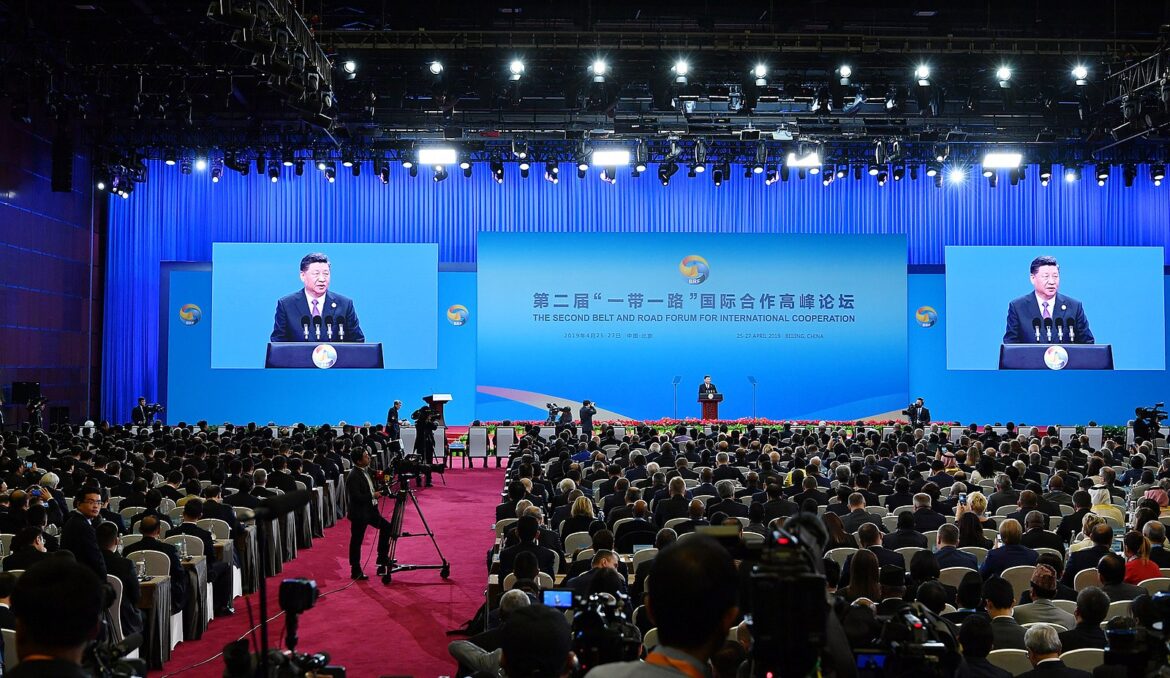The Belt and Road Initiative (BRI), a plan devised in 2013 by Xi Jinping, details the construction of maritime and land economic belts through highways, railways, energy pipelines, and streamlined border crossings. The project aims to expand the use of the yuan, the Chinese currency, globally, creating hundreds of special economic zones (SEZs) to promote Chinese-made technology. However, the initiative is not entirely positive; it has added to economic instability by adding immense debt to partner nations. Over 147 countries have signed projects with China or explicitly stated their interest and this accounts for over 40 percent of the global GDP and two-thirds of the world population. This is a significant issue as money in the form of loans, is seen as a “poisoned chalice.” This is because China’s loans are expected to be paid back fully at market interest rates and many investments require “opaque bidding processes and require the use of Chinese firms.” Additionally, China rarely cancels debts; hence most nations involved in the BRI have over 20 percent of their GDP being debt to China.
On the surface level, the projects seem nothing but beneficial economically and socially to all nations involved; however, more profound observations reveal the disproportionate risk associated with few returns to borrowing nations, indicating a debt trap. To provide more background – the trap refers to the high risk loans and “information asymmetry between lenders and borrowers [which] incentivizes the latter to misuse loans” leaving borrowers trapped. However, the trap has been demystified by several think tanks, scholars and governments like Wang Wenbin, the Chinese Foreign Ministry Spokesman used the WorldBank data “to say that 49 African countries had borrowed $696 billion. But some 75 percent came from multilateral financial institutions and private financial institutions.” For example, Sri Lanka was unable to pay its debt of over $35.8 billion as of 2021, including over $7 billion due to China, and consequently, had to hand over control of a port – taking $1.26 billion to construct – for a 99 year lease to the Chinese for $1.12 billion. Sri Lanka’s agreement with China and now excessive debt cannot be solely attributed to the BRI as it resulted from inadequate IMF terms, incongruous with its authoritarian government, and its political and economic incompetence. But, China still manages to benefit hugely from this initiative through reduced international trade frictions, costs, and transport, especially as it now owns many extensive complex infrastructures, like the port in Sri Lanka. Moreover, a re-orientation of international trade and economics, especially between China and countries throughout Eurasia, is likely to occur, leaving China empowered and more readily available to “shape the rules and norms that govern the economic affairs of the region.” The benefits solely acquired by China can elicit the question of whether the Chinese loans can be trusted by developing nations in Africa and Eurasia.
On March 4th, 2023, Chinese foreign minister Mr. Chao stated that “According to the World Bank, China is not Africa’s biggest creditor, and almost three-quarters of Africa’s debt is from financial institutions and commercial banks.” If theBRI had acquired more than 50 percent of global infrastructure investments, considering it is a relatively new initiative, global concerns would have arised as it fully demonstrates Chinese expansion. Mr Chao also mentioned that China was working hard to lessen debt loads on borrowing nations by increasing the possibility of delaying debt payments. Nevertheless,other sources, like the Council on Foreign Relations, have said the opposite is occurring as it is “difficult for borrower nations to obtain—or even seek—relief.” This leads to the central question of whether an IGO (intergovernmental organization) would be better at handling and promoting developmental projects as it is a third party and acts in the best interest of the nation at hand.
IMF loans work on the basis of economic improvements, amelioration, and development. At the same time, China lends on the basis of specific self-benefiting infrastructure projects, often in secret. The IMFs’ “austere prescriptions in the aftermath of the Asian crisis were deeply unpopular, reinforcing a backlash that persists to this day,” hence China’s ability to provide an alternative to African and Eurasian nations. In the short term it can be noticed that the IMF loans offer a more secure route to prosperity and growth. In contrast, China’s loans are often far from concessionary, as they usually include an additional cost of about 3 percent above the standard funding costs, benefiting China economically. However, “China opposes the IMF’s practice of prescribing reforms to its clients” and thus provides all nations who want it, a way out of poverty and to development. According to Boston University, “countries receiving Chinese loans tend to be on worse economic trajectories than their peers,” demonstrating that the IMF is likely a better safety, longevity, and long-term prosperity option. In the long-term, individual nations will be the only actor left to decide their economic fate between the IMF and Chinese loans. As this initiative is nothing but recent, it will take decades for the complications provoked by this project to be seen.
Edited by Katherine Lake

